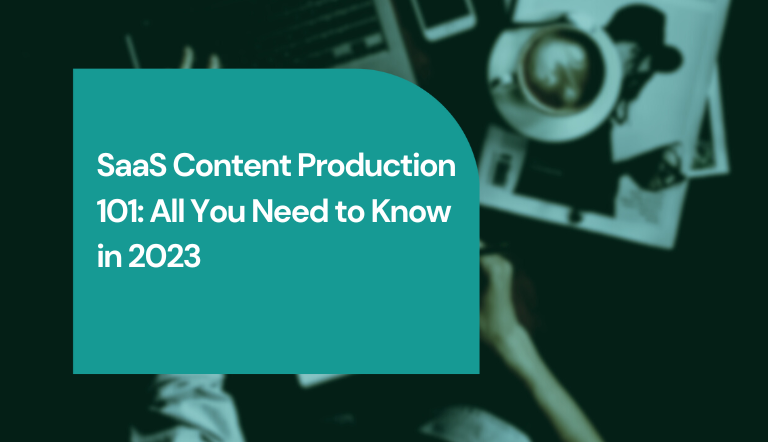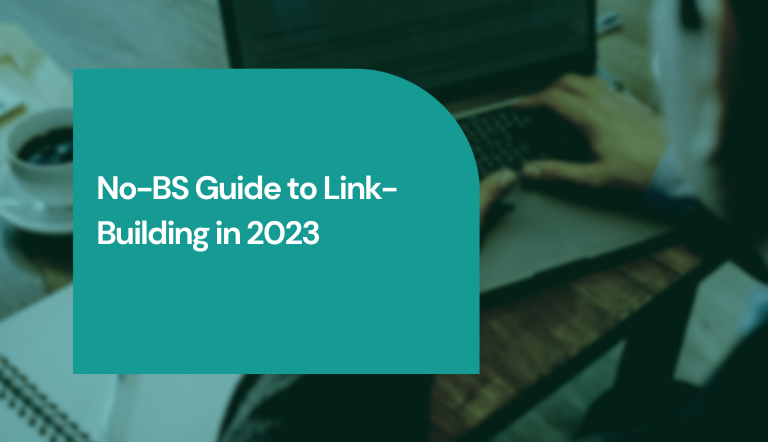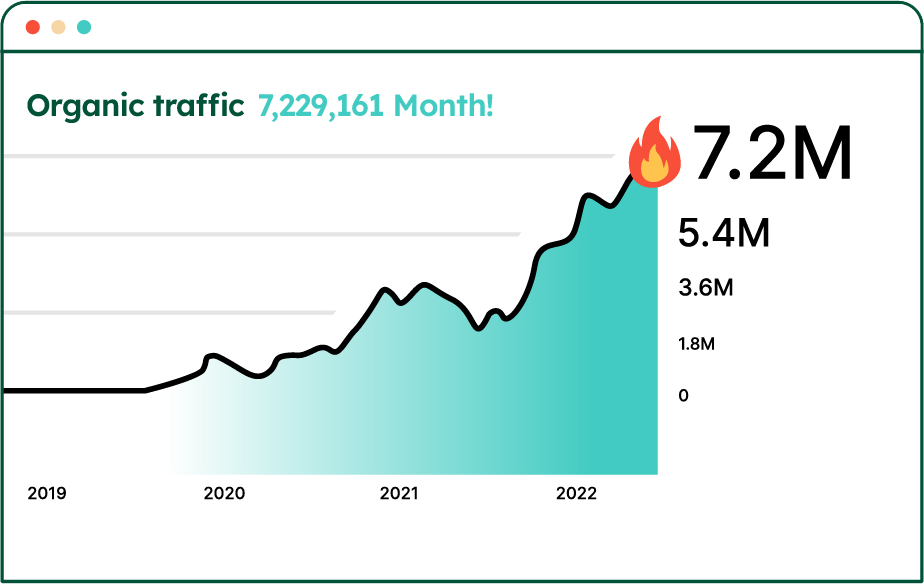SaaS content production is the foundation of most successful SaaS (Software as a Service) businesses in today’s day and age.
That’s because creating quality content is one of the most effective ways to educate your customers about your product, provide value, generate leads, and grow your business.
But how do you go about producing SaaS content? And what are the best SaaS content production practices to drive conversions and build customer relationships?
This comprehensive guide about SaaS content production will help you learn all of this and more. We’ll explore the factors that affect your content needs, go over different content types you can create, and show you how to measure their effectiveness.
So, get ready to master SaaS content production and propel your business to new heights.
What Is SaaS Content Writing?
SaaS content writing refers to creating written content with the aim to inform and engage the target audience about your SaaS business.
The goal is to highlight the features and benefits of using your software, establish your company as an industry leader, and persuade prospects to sign up for a trial and turn into paying customers.
3 Factors Impacting the Kind of Content Your SaaS Business Needs
SaaS content production is not a one-size-fits-all approach, as different businesses have unique goals and target audiences.
Understanding the factors that impact what type of content your SaaS business needs is vital if you’re looking to create an effective content marketing strategy that engages your leads and turns them into customers.
Here are the three most important factors:
#1. Your Target Audience
Understanding your target audience is crucial if you want your SaaS business to succeed.
It’s like you’re cooking dinner for your date. You wouldn’t just make a random meal and hope for the best. You’d want to ask your date about their favorite food, allergies, and other preferences to be able to cook them a dinner they are sure to enjoy.
It’s the same with your target audience. You need to understand their pain points, needs, preferences, and level of technical expertise to be able to create content that will resonate with them.
For example, if your target audience consists of highly-busy executives, you’d go for shorter, snappy content that showcases the benefits of using your software. On the other hand, if your target audience is tech-savvy individuals and developers, you’d go for in-depth content that explains your software in detail.
So, how do you identify your target audience?
There are many ways to go about it, including:
- Analyzing your competition’s target audience
- Creating focus groups
- Conducting paid interviews
- Conducting surveys
- Monitoring social media
- Attending industry events and talking to people
- Analyzing your website traffic
Once you get more information about your audience, you can create buyer personas with detailed profiles of your ideal customers, their needs, wants, challenges, and goals. That will help you understand what type of content is the best to engage and convert them into customers.
#2. Your Customer Base
One of the ways you can understand what type of content your customers need is to group them according to their common traits.
For example, you can segment your customers based on their demographics, location, industry, key work areas, position in an organization, and other factors. You can do this by creating surveys, analyzing social media profiles, or using online tools such as Google Analytics.
Segmenting your customers can help create more personalized content for the main groups, which improves engagement and conversion rates.
Another factor to consider is the stage of your customers in the buying cycle. If the customer is only at the beginning of the buying cycle, they need more educational content to help them understand pain points and potential solutions.
Those further along the buying cycle, on the other hand, will need more persuasive SaaS content that helps them make a buying decision.
#3. Your Unique Selling Points and Features
Your Unique Selling Points (USPs) are what separate your software from the competition. Your content should explain your USPs in detail so that your target audience can understand why they need your product over your competitors.
By highlighting your USPs and creating content that explains your software features and benefits, you can win over your audience and turn them into customers.
That’s why most SaaS companies focus on creating blog posts that explain their product in detail and highlight all the features and USPs.
You can also create case studies that showcase how your software can help a potential customer’s business in the real world.
Lastly, you want to create content that compares your product with your competitors. Focus on what your software does better, and pinpoint why that’s important to your customers as well as what benefits it brings to the table.
Keep in mind that the goal of SaaS content writing is to guide a prospect through the buyer’s journey and convince them to try your product.
Funnel-Based SaaS Content Production
Funnel-based SaaS content production is a marketing strategy that focuses on creating and distributing content tailored to a specific stage of a buyer’s journey.
The funnel typically includes three stages:
Top of the Funnel (ToFu)
At this stage, potential customers are beginning to research possible solutions to their problems. That’s why content for these customers should aim to inform and educate them about potential solutions without being overly promotional.
You can do that by creating informative blog posts, infographics, or social media posts.
For example, you can create a blog post about the ten best solutions to fix a common problem your customers face.
The blog post should provide real value to the reader and help them understand the best ways to solve their problem. That will help establish you as an authority in the niche and make the readers trust you more.
Then, at the end of your blog post, you can encourage the reader to learn more about the solutions and point them toward your SaaS product.
Middle of the Funnel (MoFu)
At the MoFu stage, potential customers have identified their problems and are actively searching for the best solutions.
That’s why SaaS content writing for MoFu should focus on establishing your credibility and positioning you as an expert in the industry. You can do that by creating case studies, guides, whitepapers, webinars, and other such types of content.
For example, you can create a series of downloadable guides that provide more insight into the topics related to your niche, with a focus on delivering value to your readers.
In addition, you can use them as gated content to gather contact information about your leads and start nurturing them through a targeted email campaign.
Bottom of the Funnel (BoFu)
At the BoFu, your leads are ready to make a decision and choose a product. That’s where your content needs to be more persuasive and attempt to convince them to select you over the competition.
You can do that by creating demos, offering free trials, and providing video testimonials that highlight the unique value of your product. You should also explain how they can make a purchase in easy-to-follow steps.
For example, your BoFu strategy can be to create a series of case studies showcasing the success of your previous customers. These case studies should highlight how your SaaS product helped them overcome a specific challenge.
In addition, you can share testimonials from satisfied clients to increase your trust and credibility.
You can share these case studies on your website, social media platforms, through email outreach, or during sales calls to improve your chances of closing the deal.
8 Types of Content for SaaS Companies
SaaS companies use different types of content to attract and engage new and existing customers.
Let’s take a quick look at the most common types of SaaS content you can create for your business:
#1. Guides
Guides are long-form pieces of content that provide in-depth information about a particular topic in your industry.
They usually offer actionable advice and insights, informing readers about the best ways to overcome a specific problem with data-backed solutions. That’s why some people also call them “how-to” articles.
Keep in mind that guides are long-form (typically over 3,000 words) and offer practical advice, often accompanied by visuals to add value.
Most SaaS businesses use guides as lead-generation tools. They are also a great way to increase brand awareness, build credibility, drive more traffic to your website, position yourself as an industry leader, and improve customer retention and loyalty.
#2. Research Reports
Research reports summarize the analysis and findings of a specific research project. That typically includes gathering data from various sources, analyzing the data, and presenting your findings and conclusions.
This type of content is extremely valuable for SaaS businesses because it helps establish them as an authority in the niche. In a nutshell, research reports signal to your customers that you are ready to lead the way and make new developments to get ahead of the competition.
In addition, many SaaS companies partner with big industry names to research a particular topic and create a research report. This is an excellent strategy to leverage their reach and get the attention of more people.
#3. Case Studies
Case studies show how your SaaS product benefited a specific client. They usually describe a challenge your client was facing, how your SaaS product helped, and the outcomes and benefits of the solution.
Case studies are valuable for SaaS content production because they provide social proof and show what your software can do in the real world. So, besides showcasing the effectiveness of your solution, case studies help you build credibility and trust.
Most SaaS companies love using case studies because they are a very versatile type of content that can be used in any part of a marketing funnel. You can use them to generate leads, educate readers, or even drive more sales.
#4. Infographics
Infographics are visual representations of data designed to communicate complex information in an easy-to-understand format. They use a combination of text, images, and graphics to create a visually appealing design that educates consumers.
Infographics are a valuable content tool because they are highly shareable, which means you can use them in different marketing strategies. Adding them to your blog posts, social media channels, email marketing campaigns, and other platforms can improve customer engagement and drive more traffic to your website.
#5. Videos
It’s 2023, and videos are the most popular type of content people consume. In fact, in 2021, video content accounted for 82% of all online traffic. And statistics show that the number is only going to get higher.
So, what does that mean for your SaaS business?
It means that it’s time to start developing your video content strategy.
You can create explainer videos, how-to guides, product videos, behind-the-scenes videos, and other types that can educate, engage, and drive your customers to take action.
#6. Webinars
Webinars are online seminars that allow you to connect with your audience in an interactive and more direct way.
They are one of the most valuable marketing tools because they allow you to engage with your customers and prospects in real time, answer their questions, address their concerns, and provide more information about your SaaS product.
It’s no wonder that 73% of businesses-to-business (B2B) marketers report webinars to be the number one tool for acquiring high-quality leads for their company.
In addition, you can easily repurpose webinars into other forms of content, such as videos, blog posts, and social media updates.
#7. White Papers
White papers or ebooks offer in-depth information and analysis about a complex topic or issue. They combine text, images, and graphics to create a high-quality document that provides incredible value to the reader.
The main goal of white papers is to position your business as an authority in your niche and provide useful insights and solutions to your customers.
Most SaaS businesses use white papers as a lead generation tool, where readers have to leave contact information to be able to access the white paper. That way, they can later target those leads with personalized content, trying to convert them into customers.
Keep in mind that creating white papers includes a lot of research and analysis. That’s because businesses need to spend a lot of time and resources to create something truly valuable and unique.
#8. Podcasts
Podcasts have become an increasingly popular content format, as more than 80 million people in the US listen to them regularly.
Podcasts are great because they allow you to share details about your product and the state of the industry while building a more personal connection with your audience.
You can also feature other experts and important professionals on your podcasts, which helps improve your reach.
That being said, only 18% of SaaS companies have a podcast. That’s why this content format could be a great way to gain an edge over your competitors and attract more customers.
5 Content Types by Purpose
SaaS businesses typically create content with a specific purpose in mind. Sometimes the goal is to educate the consumers, while other times, you may want to entertain, engage, or persuade your readers to take action.
Here are the five most important content types by purpose:
#1. Product-Focused Content
Product-focused content aims to educate your audience about your product’s features, benefits, and use cases. It helps move your leads down the funnel by showcasing your product in the best light.
Typically, product-focused content has three goals:
- Build awareness
- Encourage readers to take action
- Help prospects make a buying decision
Ultimately, your product-focused content should be created carefully to move your readers from the awareness stage and gradually persuade them that your product is the best option for their needs.
#2. Op-Ed Content from Subject Experts
Building trust and credibility is one of the most important things for any SaaS business, and Opposite the Editorial Page (Op-Ed) is an excellent way to do that.
Op-Ed content typically features a subject expert with a unique opinion on an industry topic. Their expertise and experience provide additional value to your readers, which helps you stand above the regular content of your competitors.
To create Op-Ed content for your SaaS business, you must build relationships with subject experts and ask for their opinions on a specific topic. This will ensure that your SaaS content contains unique insights and not just what’s already out there.
#3. In-Depth Educational Content
In-depth educational content is an excellent way to attract more visitors to your website and build authority. Comprehensive, long-form SaaS content is the best way to address your audience’s questions and problems.
In addition, long-form content gets more backlinks, which is vital for your search engine rankings. That’s important because it helps you improve your online visibility and drives more visitors to your website.
#4. Pain Point Content
One of the best ways to build a stronger relationship with your target audience is to create content that addresses their pain points.
You can get the most common pain points by interviewing your current customers, creating surveys, researching competitors, etc.
Once you pinpoint your audience’s most common pain points, you need to create content that addresses these problems. This builds more trust between you and your readers and helps convince them that your product is the right solution to their pain points.
#5. Data-Driven Content
Data-driven content uses data and analytics to support the claims and arguments of your content. This builds credibility and establishes authority, which is vital to winning your website visitors over.
Another great advantage of quality data-driven content is that other websites are likely to link to it. This boosts your search engine rankings and additionally improves your credibility.
Looking for more ways to improve SEO? Check out our SaaS technical SEO guide!
SaaS Content Production Process
Content marketing is one of the most important aspects of your SaaS business because it can help you attract more customers, build brand awareness, improve online visibility, and grow your business.
Here’s what you need to do to start your SaaS content production process:
#1. Pick a SaaS Content Marketing Strategy
Before creating your SaaS content marketing plan, you need to understand who your target audience is. You should identify your buyer personas, uncover their pain points, discover what’s important to them, and research other things that help you understand them better.
In addition, you should check your competition and see what their SaaS content marketing strategy looks like. That can help you get a better idea of what you should (or shouldn’t) do.
Once you get a better understanding of your prospects, customers, and competitors, you should identify the best-performing content types and create a SaaS content marketing strategy that educates, entertains, and inspires people to take action.
#2. Choose Relevant Keywords and Topics
Researching your audience and competitors should help you better understand the topics your potential customers would like to read about.
But before you start writing, you must also identify relevant organic keywords your customers search for. To do that, you can use Ahrefs, SEMrush, and other keyword research tools.
The best keywords have a combination of high search volume and low competition. Doing keyword research should help you identify these keywords, which you can then make part of your SaaS content strategy.
Optimizing your content around relevant keywords will help you show up at the top of search engine results pages (SERPs) when your potential customers search for these terms.
#3. Create a Detailed SaaS Content Brief
If you’re not the one writing content, you’ll need to create a detailed SaaS content brief that covers your target audience, your story, your product, content strategy goals, desired tone and voice, content outline, and other important information.
Creating a detailed content brief can help SaaS content writers better understand what you want, which means they are likely to do a better job.
#4. Write High-Quality Content
Creating high-quality content is vital for any SaaS content production process. To do that, you need to make your content valuable to the readers, address their pain points, answer their questions, and offer solutions.
The goal with any SaaS content is to create something that will appeal to both your readers and search engines. That way, you can rank high on search engines and also provide value to your website visitors.
Use easy-to-understand language, and create content that’s clear, readable, and valuable. Remember to add a call to action and move your readers closer to using your SaaS solution.
#5. Create a Link-Building Strategy
Without backlinks, your content is less likely to rank high on search engines.
That’s why you need to create a SaaS link-building strategy to acquire relevant backlinks and boost your search engine rankings.
Some popular link-building strategies include guest posting, creating infographics, digital PR, Help a Reporter Out (HARO), and broken link-building.
#6. Update Your Content Regularly
Once you publish your content, you need to update it regularly to keep it relevant and interesting.
After all, there is a lot of competition in the SaaS industry, and you need to ensure your content remains accurate and updated with the latest information.
Doing this will help you rank high on search engines and maintain the trust of your website visitors.
Benefits of Content Production for SaaS Businesses
Here’s how SaaS content production can benefit your business:
- It helps you develop a unique brand voice.
- It improves your online presence and brand awareness.
- It boosts your credibility and authority.
- It attracts more qualified leads to your website.
- It helps transition prospective customers through a buyer’s journey.
- It allows you to get a deeper understanding of your customers.
- It increases conversion rates.
- It is an excellent way to boost other marketing efforts like email, social media, and SEO campaigns.
- You can track performance and adjust your approach to get the best results out of your SaaS content production strategy.
5 Ways SaaS Businesses Measure Success
So, how do you know your Saas content production is successful?
Well, most SaaS companies follow these five metrics to measure the effectiveness of their content marketing efforts:
- Brand awareness. This metric estimates how familiar people are with your brand and product. You can use the number of website visitors, page views, and other factors to measure your brand awareness.
- Engagement. Engagement metrics help you understand how people behave once they visit your website. You can, for example, track the time they spend on your website, their bounce rates, CTRs, social media shares, and other metrics that measure engagement.
- Lead generation. Lead generation refers to collecting information about your prospects for future use. You can measure lead generation success by tracking the number of generated qualified leads, conversion rates, marketing qualified leads, and other metrics.
- Sales enablement. A good content strategy should move your prospects through the buyer’s journey and convert them into customers. You can measure that success by tracking trial sign-ups, the number of demo requests, sales conversions, and other metrics,
- Search engine optimization (SEO). These metrics measure how well your website is doing on search engines. You can check keyword rankings, domain authority, domain rating, and other metrics to measure the success of your SEO content writing efforts.
SaaS Content Production Tools
Here are some tools you can use to make sure your SaaS content production is on point:
- Grammarly. Helps you create stylistically and grammatically accurate content.
- Copyscape. Helps ensure your content is unique.
- Ahrefs and SEMrush. Help you research competitors, backlinks, keywords, and more.
- SurferSEO. One of the best content writing tools that help you optimize your content for search engines.
- Hemingway App. Improves readability and flow of your content.
- ChatGPT. A versatile AI tool that can help with everything from keyword research to content creation and editing.
- Frase. Another AI tool that can help with brainstorming, creating content briefs, writing content, optimization, and analysis.
- Google Analytics. Tracks how your visitors interact with your website.
- Google Search Console. Tracks how you perform on Google.
Conclusion
And that’s everything you need to know about SaaS content production.
We hope this article helped you understand the importance and benefits of creating quality SaaS content.
If you want to learn more about content writing and marketing, make sure to visit our blog.




